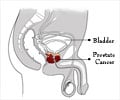A new study has found that during the years 2000-2009, eye injuries during robotic-assisted radical prostatectomy (RARP) increased nearly 10-fold.

According to Ajay Sampat, M.D. and his colleagues from the University of Chicago, there are specific requirements associated with RARP, perhaps most notably the necessity for the patient to be positioned head-down in what is called the Trendelenburg position. Consequences include facial swelling, arm injury, as well as corneal and other visual injuries.
In Dr. Sampat''s study, which involved a review of 136,711 RARP cases, most of the visual injuries were from corneal abrasion, or scratching of the eye surface. Possible causes for the association between RARP and eye injuries include the long duration of surgery, patient positioning or something associated with the robot itself.
Although the exact causes and reasons for the increase in eye injury during RARP could not be concluded from the study, Dr. Sampat said the findings could offer guidance for patients undergoing robotic procedures.
"It is important for patients who are considering a robotic operation to discuss these concerns with their health care providers to consider the risks and benefits of all options," said Dr. Sampat. "And physicians caring for patients undergoing RARP should be more watchful of these potential injuries and take the necessary steps to help prevent them."
Source-Newswise









![Prostate Specific Antigen [PSA] Prostate Specific Antigen [PSA]](https://www.medindia.net/images/common/patientinfo/120_100/prostate-specific-antigen.jpg)





